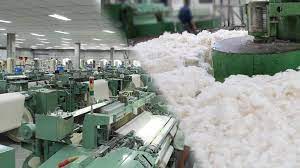India aims for $250 bn textile production by 2030

The Indian government has unveiled an ambitious plan to elevate the nation's textile production to a staggering $250 billion by the year 2030. This target is part of a broader initiative to propel textile exports to $100 billion by the same year, with a substantial portion, $40 billion, dedicated to apparel exports. The announcement underscores India's commitment to fortify its position as a global leader in the textile and apparel industry.
Currently, the textile and apparel sector plays a pivotal role in India's economy, contributing over 4 per cent to the nation's total GDP and accounting for 14 per cent of its annual export earnings. However, the sector faced formidable challenges exacerbated by the COVID-19 pandemic, necessitating concerted efforts from both the government and industry stakeholders to recuperate fully.
To revitalize the textile industry and enhance its global competitiveness, the government has implemented a multifaceted strategy aimed at fostering innovation and vibrancy across the sector. This comprehensive approach encompasses various measures designed to stimulate growth and resilience.
India boasts a rich heritage in textile manufacturing, emerging as the world's second-largest textile exporter with a substantial 7.4 per cent share in the global market. Additionally, the country holds the distinction of being the fifth-largest garment exporter, commanding a 3.1 per cent share in the global market, as per data released by the World Trade Organization (WTO) in 2023.
Presently, apparel production in India stands at $52 billion, with exports accounting for $14 to $17 billion and the domestic market contributing approximately $35 to $38 billion. Despite maintaining stability in garment exports over the past five years, the fiscal year 2023-24 witnessed a decline of 10.2 per cent, with exports plummeting to $14.53 billion compared to $16.19 billion in the preceding fiscal year.
Similarly, textile exports experienced a downturn, contracting by 12.5 per cent to $19.4 billion in 2022, notwithstanding India's global market share of 7.4 per cent, according to WTO data. However, amidst these challenges, the Manufacturing of Textiles Index for the fiscal year 2023-24 saw a modest uptick of 0.4 per cent, reaching 108.2 compared to the previous year, signaling resilience and adaptability within the sector.
To fuel export growth and bolster the industry's competitiveness, the Indian government has introduced several strategic initiatives, including the Remission of Duties and Taxes on Exported Products (RoDTEP) scheme, Rebate of State and Central Taxes and Levies (RoSCTL), the Production Linked Incentive (PLI) scheme, and the PM Mega Integrated Textile Region and Apparel (PM MITRA) park. Additionally, exploratory efforts are underway to leverage Free Trade Agreements (FTAs) to mitigate non-tariff barriers in existing markets.
The PLI scheme targets an expansion in the man-made fiber and technical textile sectors, while the PM-MITRA park aims to augment scalability and efficiency within the industry. Moreover, initiatives such as RoDTEP and RoSCTL are instrumental in providing exporters with stable incentives, thereby fostering a conducive environment for sustained growth and innovation.
As India sets its sights on the $250 billion textile production milestone by 2030, the concerted efforts of the government, industry stakeholders, and strategic initiatives are poised to propel the nation towards a brighter future in the global textile arena.
